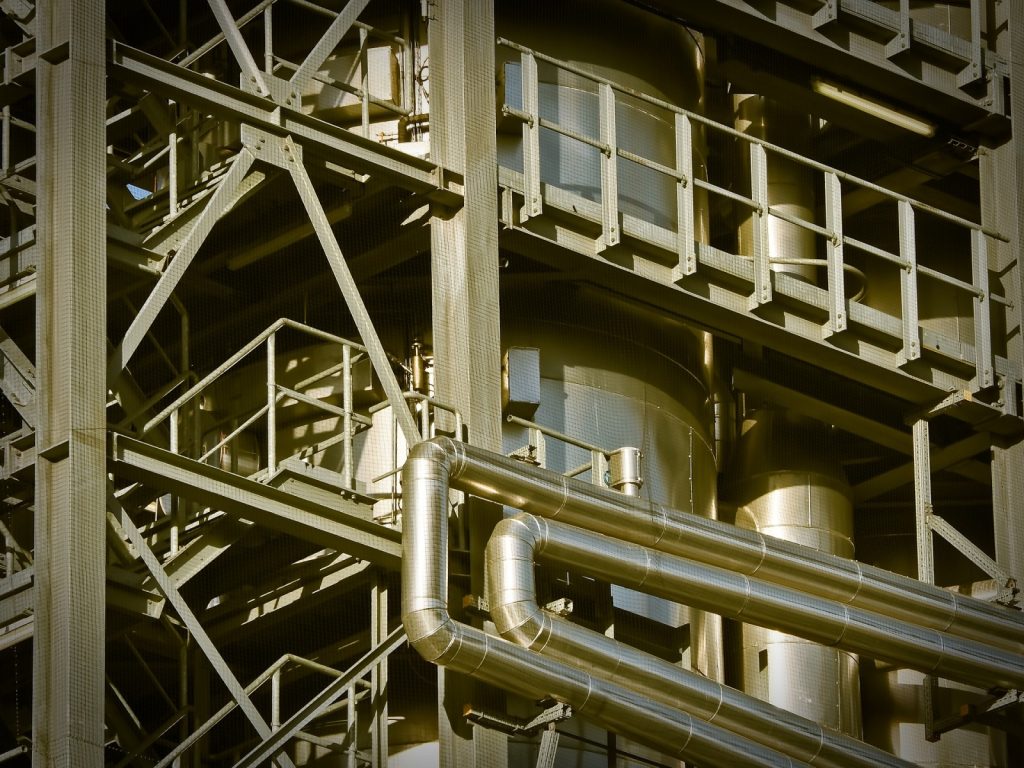Blog
Find articles that matter. From trading to shipping, trends to valuable goods, you can deep dive into everything you need.
Latest Posts
Blog
International trade involves the exchange of goods and services across national borders. Product classification is an essential aspect of international trade as it helps identify and categorize products for the purpose of determining tariffs, taxes, and regulatory requirements. In this blog post, we will explore the different product classification systems, and how product classification works in international trade.
Product Classification Systems
Product classification systems provide a standardized method for identifying and categorizing products based on their nature, composition, and intended use. There are several different classification systems used in international trade, each with their own unique codes and descriptions.
Harmonized System
One of the most widely used product classification systems is the Harmonized System (HS). The HS is a six-digit code system that categorizes products into 21 sections. They are further divided into chapters and sub-headings. Each code in the HS corresponds to a specific product, and the system is used to determine customs duties and taxes as well as for statistical purposes.
The HS is a global product classification system that is used by over 200 countries and territories. It was developed by the World Customs Organization (WCO) in the 1980s. It has been updated periodically to reflect changes in technology, trade, and the global economy.
Standard International Trade Classification
Another product classification system is the Standard International Trade Classification (SITC). The SITC is used primarily for statistical purposes and categorizes products into ten sections based on their economic characteristics and uses. The system was developed by the United Nations in the 1950s and has been updated periodically to reflect changes in the global economy.
North American Industry Classification System
The North American Industry Classification System (NAICS) is another product classification system that is used in Canada, Mexico, and the United States. The NAICS categorizes businesses into sectors and sub-sectors based on their economic activity. The system is used to collect data on businesses for statistical purposes and to analyze economic trends.
Other Product Classification Systems
There are also several other product classification systems that are used in specific regions or industries. For example, the European Union uses the Combined Nomenclature (CN) system to classify products. The pharmaceutical industry uses the Anatomical Therapeutic Chemical (ATC) Classification system.
How Product Classification Works
Product classification is a crucial component of international trade. It is a systematic process used to identify and categorize products based on their nature, composition, and intended use. This process is necessary to determine customs duties and taxes, as well as for statistical purposes.
Classification Process and Criteria
Product classification is based on several criteria, including the nature of the product, its composition, and intended use. For example, a customs official may classify a product as a textile based on its physical characteristics, such as its fibers or weave pattern. The official may also consider the product's intended use, such as whether it is intended for clothing or industrial use.
Customs officials are responsible for classifying products when they enter a country. They use a product's description, invoice, and other accompanying documents to determine its classification. The classification process involves several steps, including analyzing the product's physical characteristics, its intended use, and any applicable regulations or laws.
To classify a product, customs officials typically use a product classification system, such as the Harmonized System (HS), the Standard International Trade Classification (SITC), or the North American Industry Classification System (NAICS). These systems provide a standardized set of codes and descriptions that can be used to identify and classify products.
Importance of Accurate Classification
Accurate product classification is essential for businesses involved in international trade. Incorrect classification can result in the imposition of excessive customs duties and taxes or even fines and penalties. Accurate classification can also expedite the customs process, allowing for faster processing times and fewer delays.
In recent years, advancements in technology have led to the development of automated product classification systems, such as those based on artificial intelligence (AI) and machine learning. These systems can analyze product descriptions and other data to determine the most accurate classification code. However, while technology can aid in the classification process, it is important to note that it is not a substitute for human expertise.
Best Practices for Product Classification
Accurate product classification is crucial for businesses involved in international trade. There are several best practices that can help ensure that products are classified correctly.
Understanding the classification system(s) applicable to products
Businesses should familiarize themselves with the product classification systems that apply to their products. These include the Harmonized System, Standard International Trade Classification, and any other relevant systems. This requires understanding the different codes and descriptions used in each system, as well as any exemptions or special rules that may apply.
Keeping up-to-date with changes in classification rules and regulations
Product classification rules and regulations can change over time. So it is important to stay informed about any updates or changes that may affect your products. This includes monitoring changes to the Harmonized System or other classification systems, as well as any changes to customs rules or regulations in the countries where you do business.
Investing in expertise and training
Product classification can be a complex and technical process, so businesses should invest in expertise and training to ensure that their staff has the knowledge and skills needed to classify products accurately. This may include training on the relevant classification systems, as well as ongoing professional development to stay up-to-date with changes in classification rules and regulations.
Conducting regular product reviews
Businesses should conduct regular reviews of their product classification practices to ensure that products are being classified accurately and in compliance with relevant regulations. This may include reviewing product descriptions, analyzing customs data, and seeking feedback from customers or industry experts.
Using technology to supplement human expertise
While technology can aid in the product classification process, it is important to note that it is not a substitute for human expertise. Businesses should use technology to supplement human expertise, rather than relying on it exclusively. This may include using automated classification systems based on AI or machine learning, but with human oversight and input.
Final Thoughts on Product Classification in International Trade
Product classification is an essential aspect of international trade. Accurate product classification can help businesses comply with regulatory requirements, reduce the risk of penalties and fines, and facilitate faster processing times at customs. As the global trade environment continues to evolve, product classification will remain a crucial tool for businesses and governments alike.
The future of product classification in international trade is likely to be shaped by advancements in technology, such as the use of artificial intelligence and machine learning. These technologies could potentially streamline the classification process and reduce the risk of errors. However, it is important to note that technology is not a substitute for human expertise in product classification.
Digitalization has had a significant impact on the global economy, with many industries undergoing a digital transformation. The field of export has not been left behind, with businesses leveraging digital technologies to enhance their operations and increase efficiency. In this article, we will explore the current state of digitalization in the export industry and the various digital developments that have emerged, along with their significance. Also, we will provide insights into emerging digital technologies and their potential impact on the future of exporting. Let's examine together digital developments in the field of export!
Understanding Digital Developments in Exporting
Digital developments in exporting refer to the use of various digital technologies to streamline and optimize the processes involved in exporting goods and services. These developments have transformed the industry by increasing efficiency, reducing costs, and improving overall competitiveness. Here are some of the types of digital developments in exporting.
E-commerce Platforms
E-commerce platforms have revolutionized the way businesses export their products. They offer a convenient and efficient way for businesses to sell their products globally, allowing them to reach a wider audience and increase sales. By utilizing these online marketplaces, businesses can streamline the export process and reduce costs associated with traditional export methods. Overall, e-commerce platforms have opened up new opportunities for businesses to engage in international trade and expand their global reach.
Electronic Data Interchange (EDI)
A method of electronically exchanging information between businesses, reducing the need for paper-based documentation and enhancing efficiency. EDI allows businesses to exchange data such as purchase orders, invoices, and shipping notices in a standardized format, reducing the risk of errors and improving the speed of transactions. By using EDI, businesses can also improve their visibility into their supply chain operations, enabling them to make better-informed decisions and respond more quickly to changing market conditions.
Overall, these digital developments have had a significant impact on the exporting industry, making it easier for businesses to engage in international trade and reach new markets. By embracing these technologies, businesses can improve their competitiveness in the global marketplace and unlock new opportunities for growth and innovation.
Supply Chain Management
Digital developments have had a transformative impact on supply chain management in the exporting industry. These technologies have made it easier for businesses to track their products, improve transparency, and enhance collaboration with their partners.
One of the main advantages of digital developments in supply chain management is increased visibility. Businesses can use digital technologies to track their products as they move through the supply chain, providing them with real-time information about the location and status of their goods. This allows businesses to respond quickly to any issues that may arise, reducing the risk of delays or disruptions in the supply chain.
Digital developments in supply chain management have also improved collaboration between businesses and their partners. Cloud-based platforms and other digital tools make it easier for businesses to share information securely and collaborate in real time. This has reduced the need for physical paperwork and enhanced the speed and accuracy of information sharing.
Examples of digital developments in supply chain management include Radio Frequency Identification (RFID) technology, which uses radio waves to track products throughout the supply chain, and blockchain technology, which provides a secure and transparent way to track and manage transactions.
Digital developments in supply chain management have improved the efficiency and transparency of the exporting industry, making it easier for businesses to engage in international trade and reach new markets. By embracing these technologies, businesses can improve their competitiveness and increase their chances of success in the global marketplace.
Digital Developments in Logistics and Transportation
Digital developments in logistics and transportation refer to the integration of digital technologies into the processes involved in moving goods from one place to another. These technologies have transformed the industry, providing businesses with greater visibility, control, and efficiency in their logistics operations. Examples of digital developments in logistics and transportation include:
Transportation Management Systems (TMS)
Digital platforms provide businesses with end-to-end visibility and control over their transportation operations, allowing them to optimize routes, reduce transportation costs, and improve delivery times.
Autonomous Vehicles
Self-driving vehicles can transport goods without the need for human intervention, reducing the risk of accidents and increasing efficiency.
Warehouse Automation
Robotics and automation technologies can automate warehouse processes such as picking and packing, reducing errors and increasing speed.
Emerging Technologies and Their Potential Impact on Digital Exports
The rise of digital technologies has significantly transformed the global export industry. As more businesses turn to digital platforms for selling their products worldwide, emerging technologies like blockchain, virtual and augmented reality, 5G, and IoT are increasingly being utilized to streamline and enhance the export process.
Blockchain Technology
Blockchain technology has the potential to revolutionize the way export transactions are conducted. It provides a secure and transparent way to store and transfer data, making it ideal for cross-border transactions. Use cases for blockchain in digital exports include supply chain management, international payments, and digital identity verification.
Cryptocurrencies are also impacting digital exports by providing a decentralized and borderless payment system. They can be used to facilitate cross-border transactions without the need for intermediaries like banks or payment processors. However, regulatory challenges exist around the use of cryptocurrencies, as different countries have varying regulations on their use and exchange.
Emerging Technology
Emerging technologies such as virtual and augmented reality, 5G, and the Internet of Things (IoT) have the potential to transform the way digital exports are conducted. VR and AR can enhance the customer experience by allowing them to visualize and interact with products before making a purchase. 5G can enable faster and more reliable connectivity, while IoT can improve supply chain management and logistics.
Unlocking the Potential of Digital Exports
Digital developments have significantly transformed the exporting industry. Technology has enabled businesses to operate more efficiently and cost-effectively and reach a wider audience through e-commerce platforms, virtual meetings, and other digital tools. Businesses that embrace digitalization in their exporting strategy are likely to benefit from increased efficiency, reduced costs, and expanded global reach. In the digital age, businesses must adopt these new technologies and keep up with the rapidly changing global market.
The future of exporting in the digital age looks promising, as technology continues to evolve, and businesses can leverage these advancements to explore new markets and grow their international presence. However, it is essential to stay ahead of the curve and embrace digitalization as early as possible. In summary, digitalization has opened up new opportunities for businesses to expand their exporting capabilities. The future of exporting belongs to those who embrace digitalization and leverage technology to their advantage.
Turkish coffee is a cherished and time-honored beverage that has been a staple in Turkish culture for centuries. With its unique brewing method and bold taste, Turkish coffee has become increasingly popular around the world. Being in such high demand in the world, Turkish coffee exports remain an important part of the Turkish economy.
In this blog post, we will delve into the intricacies of Turkish coffee production, from the type of coffee beans used to the roasting and brewing process. Additionally, we will explore the key factors that contribute to the quality of Turkish coffee and the growing interest as well as the export of Turkish coffee. Read on to learn more.
The History of Turkish Coffee
The history of Turkish coffee is rich and storied, with origins dating back centuries. According to the sources on the subject, the first Turkish coffee was brought to the Ottoman Empire by traveling merchants in the 15th century. It is believed that Özdemir Pasha, the governor in charge of Yemen, introduced Turkish coffee to Ottoman Sultan Suleiman the Magnificent. Turkish coffee quickly became a beloved beverage in the Ottoman Empire, and its popularity only continued to grow over time.
Turkish coffee has also played an important role in Turkish culture throughout history. In the Ottoman Empire, coffeehouses were important social gathering places, where people would gather to drink coffee, play games, and discuss politics and current events. To this day, this tradition still continues in Türkiye where people gather in coffeehouses. As for Turkish coffee, it remains a popular beverage in Türkiye. While it is consumed almost on a daily basis, it is also served during special occasions and holidays.
Türkiye’s Increasing Coffee Exports
Even though Türkiye is not a country with a suitable climate for cultivating coffee, the Turkish coffee export market is a significant part of the Turkish economy. As the export of coffee is increasing with each passing year, Türkiye is displaying a successful performance.
In the 2017-2021 period, Türkiye exported coffee to 144 countries in total and generated a revenue of 80 million dollars. During this period Saudi Arabia, Cyprus, and the Netherlands were the top three countries that imported coffee from Türkiye.
In the list, Saudi Arabia came first with an import worth 11,6 million dollars. Cyprus followed second with a coffee import worth 8,1 million dollars. Lastly, the Netherlands came third with 7,4 million dollars worth of coffee imports.
According to the Turkish Statistical Institute, Türkiye exported 23,7 million dollars worth of coffee alone in 2021, increasing its coffee exports significantly.
Why is Turkish Coffee in Demand?
One of the factors contributing to the popularity of Turkish coffee exports is its unique flavor profile. Turkish coffee is known for its rich, bold flavor, which comes from the combination of finely ground coffee beans, sugar, and water. This flavor profile sets Turkish coffee apart from other types of coffee and makes it a favorite among coffee lovers around the world.
Another factor contributing to the success of Turkish coffee exports is the growing demand for specialty coffee. Specialty coffee is a term used to describe high-quality coffee that is sourced, roasted, and brewed with care. Turkish coffee is considered a specialty coffee due to its unique brewing method and flavor profile. As more consumers around the world seek out specialty coffee, Turkish coffee has the potential to become even more popular.
What Makes Turkish Coffee Special?
Turkish coffee is famous for its distinct flavor and brewing method. What sets Turkish coffee apart from other coffee varieties is its flavor profile, which is complex and multi-layered.
Brewing Method
The brewing process of Turkish coffee is an essential factor that contributes to its unique taste. Unlike other coffee varieties that use drip or espresso machines, Turkish coffee is brewed using a cezve, a small copper or brass pot with a long handle. The cezve allows for precise temperature control and brewing technique that is critical to the coffee's flavor.
Water Quality
The quality of the water used to brew Turkish coffee also plays a crucial role in its taste. Turkish coffee requires soft water, which is water with low mineral content. Hard water, which contains high levels of minerals such as calcium and magnesium, can affect the coffee's taste and aroma.
Grinding
The grinding process of Turkish coffee is another factor that contributes to its unique flavor. Turkish coffee beans are ground into an extremely fine powder, which is finer than espresso or drip coffee. This fine grind allows for maximum extraction of flavor from the beans during the brewing process.
Foaming
One of the most distinctive features of Turkish coffee is the foam that forms on top during the brewing process. This foam is created by the coffee oils and contributes to the coffee's rich, creamy texture.
Sugar
Turkish coffee is often brewed with sugar, which adds to the coffee's flavor complexity. Sugar is added to the cezve before the brewing process begins, and the amount used can vary depending on personal preference.
The unique brewing method, water quality, grinding process, foaming, and addition of sugar all play critical roles in creating the complex and flavorful taste of Turkish coffee.
Experience the Richness of Türkiye's Turkish Coffee Exports with Turkish Goods
Turkish coffee is a unique and delicious beverage with a rich history and a loyal following around the world. Moreover, Turkish coffee exports continue to be an important part of the Turkish economy each year, and with the growing demand for specialty coffee, its popularity is only set to increase.
Turkish Goods offers a wide range of products, including high-quality Turkish coffee that can be imported to any location in the world. We pride ourselves on sourcing only the finest products and delivering them directly to your doorstep. So, if you want your customers to experience the rich flavor and aroma of authentic Turkish coffee, we invite you to visit our website and explore our offerings.
Carriage Paid To (CPT) is an international trade term that defines the seller's obligations and responsibilities for delivering goods to a buyer at an agreed destination. It is one of the most commonly used Incoterms in global commerce. It is often used when goods need to be transported by multiple modes of transportation.
Understanding CPT is essential for any business engaged in international trade. It provides clarity and guidance on the responsibilities of the buyer and seller. This can help avoid disputes and minimize risks. By clearly defining who is responsible for each aspect of the transaction, CPT helps to ensure that goods are delivered on time and in good condition. This, in turn, can help to build trust and establish positive long-term relationships between trading partners.
The purpose of this blog post is to provide a comprehensive overview of Carriage Paid To (CPT) and its role in international trade. We will discuss the obligations of the buyer and seller under CPT, and the advantages and disadvantages of using CPT.
What is Carriage Paid To?
Carriage Paid To (CPT) is essentially an international trade term that defines the obligations of the seller for delivering goods to a buyer at an agreed destination. Under CPT, the seller is responsible for arranging and paying for the transportation of the goods to the agreed destination. This includes the cost of loading the goods onto the transport vehicle, any inland transportation required, and the cost of unloading the goods at the destination.
Moreover, CPT can be used for any mode of transportation, including sea, air, and land transport. The seller must arrange for the transport of the goods and ensure that they are delivered to the agreed destination. Once the goods have been delivered to the carrier, the risk of loss or damage to the goods transfers from the seller to the buyer.
CPT is similar to other Incoterms such as Carriage and Insurance Paid To (CIP) and Delivered At Place (DAP). The key difference between CPT and these other Incoterms is that CPT does not include insurance coverage. The buyer is responsible for obtaining insurance to cover the goods during transportation.
Obligations of the Buyer and Seller Under CPT
Seller’s obligations
Delivery of goods to the carrier
Under CPT, the seller is responsible for delivering the goods to the carrier at the agreed place of shipment. The seller must ensure that the goods are properly packaged and labeled for transportation. They also must ensure any necessary documentation, such as the bill of lading, is provided to the carrier.
Export clearance
The seller is responsible for obtaining any necessary export licenses or permits required to export the goods from the country of origin. This may include obtaining customs clearance and complying with any applicable regulations or laws.
Contract of carriage
The seller is responsible for arranging and paying for the transportation of the goods to the agreed destination. This may involve contracting with a carrier, such as a shipping company or trucking company, to transport the goods.
Providing documents to the buyer
The seller is responsible for providing the buyer with any necessary documentation, such as the bill of lading or commercial invoice. This allows the buyer to take possession of the goods at the destination.
Buyer’s obligations
Payment of the price
Under CPT, the buyer is responsible for paying the price of the goods as agreed upon in the contract of sale.
Import clearance
The buyer is responsible for obtaining any necessary import licenses or permits required to import the goods into the destination country. This may include obtaining customs clearance and complying with any applicable regulations or laws.
Contract of carriage
The buyer is responsible for arranging and paying for any additional transportation required to transport the goods from the destination port to the final destination.
Taking delivery of the goods
The buyer is responsible for taking delivery of the goods at the agreed destination and ensuring that they are properly unloaded and stored. The buyer is also responsible for inspecting the goods upon delivery and reporting any damages or discrepancies to the seller in a timely manner.
Advantages and Disadvantages of Using CPT
Advantages
Clear division of responsibilities
CPT provides a clear and standardized division of responsibilities between the buyer and seller. This helps to avoid misunderstandings and disputes. It can make it easier for both parties to fulfill their obligations.
Cost-effective
CPT can be a cost-effective Incoterm for both the buyer and seller. It requires the seller to arrange and pay for transportation to the agreed destination.
Suitable for multiple modes of transportation
CPT is suitable for use with multiple modes of transportation, including sea, air, and land transport. This makes it a flexible Incoterm that can be used in a wide range of situations.
Minimizes risk
By clearly defining the responsibilities of the buyer and seller, CPT helps to minimize risk. It reduces the likelihood of disputes or problems arising during the transportation of goods.
Disadvantages
Limited insurance coverage
CPT does not include insurance coverage for the goods during transportation. This means that the buyer must obtain their own insurance coverage to protect against loss or damage during transit.
Potential for transportation issues
As with any Incoterm, there is always the potential for transportation issues to arise, such as delays, damages, or losses. However, the risk of such issues can be minimized through proper planning and communication between the buyer and seller.
Limited control over the transportation process
Under CPT, the seller is responsible for arranging and paying for transportation to the agreed destination. This means that the buyer has limited control over the transportation process. The buyer must rely on the seller to ensure that the goods are delivered on time and in good condition.
Potentially complex documentation
CPT can involve complex documentation, such as bills of lading and commercial invoices, which must be properly completed and submitted to ensure that the goods are transported correctly.
Final Thoughts
CPT is a commonly used Incoterm that can be a good choice for both buyers and sellers involved in international trade. By providing a clear division of responsibilities and a standardized set of rules, CPT can help to minimize risk, reduce misunderstandings, and make the transportation process smoother and more efficient.
However, as with any Incoterm, it is important for both parties to carefully consider the advantages and disadvantages of using CPT in their specific situation. Buyers and sellers should also carefully review and negotiate the terms of the contract of sale to ensure that they are clear on their respective responsibilities and that their interests are properly protected.
Overall, CPT is a useful tool for international trade, but it is important to use it in conjunction with good communication, proper planning, and a thorough understanding of the legal and practical issues involved in the international transportation of goods.
Free Trade Agreements (FTA) are one of the most important factors driving economic interactions in today's world. Free trade agreements (FTAs) are international agreements between two or more countries that aim to promote free trade and remove trade barriers such as tariffs, quotas, and other restrictions. FTAs are designed to boost economic growth by increasing the flow of goods and services between countries, as well as to stimulate investment and job creation.
Free Trade Agreements are negotiated to remove barriers to trade between countries. During these negotiations, the participating countries agree on what restrictions will be lifted on the free movement of goods and services. In addition, treaties often cover intellectual property rights, environmental standards, labor rights, and other business matters.
After the text of the treaty is prepared, the participating countries sign it and the agreement enters into force. Businesses that want to trade according to the rules set in the treaty must follow certain procedures and obtain the necessary certificates. These procedures are set to remove barriers to trade and ensure the free movement of businesses.
What are the Benefits of Free Trade Agreements?
Free trade agreements include regulations such as lowering customs duties, removing trade barriers, and facilitating trade relations in order to liberalize trade. The benefits of free trade agreements are far-reaching. Businesses can export their products and services to more countries. The competitive environment increases, a wider product range is offered to consumers, and economic growth and employment increase. Although each country has certain benefits in its system, its benefits, in general, are as follows:
Increased market access
FTAs allow businesses to expand their market by providing greater access to foreign markets. This results in increased sales, profits, and job opportunities for businesses.
Lower costs
FTAs help reduce the cost of imported goods, which results in lower prices for consumers. It also helps reduce the cost of production for businesses, making them more competitive in the global market.
Improved economic growth
FTAs can promote economic growth by stimulating investment, increasing trade, and creating jobs. This is because free trade promotes competition and innovation, which can lead to increased productivity and efficiency.
Strengthened political and diplomatic relations
FTAs can improve political and diplomatic relations between countries. By promoting economic cooperation, FTAs can build trust and understanding between nations.
In light of features, free trade agreements can provide a wide range of benefits for countries that participate in them. They can help businesses expand their markets, reduce costs, and stimulate economic growth while improving political and diplomatic relations between nations. However, it's essential to consider the potential drawbacks of FTAs as well, such as job displacement and environmental concerns. Overall, FTAs can be a powerful tool for promoting global trade and economic development when implemented responsibly and with consideration for all stakeholders involved.
What are the Drawbacks of Free Trade Agreements?
While free trade agreements can have several advantages, such as boosting economic growth and creating jobs, they also have some disadvantages. Critics argue that FTAs can lead to job losses, harm domestic industries, exacerbate income inequality, and negatively impact the environment and public health.
Moreover, some argue that FTAs can disproportionately benefit larger, more developed countries, leaving smaller or less developed nations at a disadvantage. Here are some of the possible disadvantages of FTAs:
Job displacement
FTAs can result in the displacement of workers in industries that face increased competition from imports. This can lead to unemployment and negative social impacts, particularly in industries that are heavily dependent on trade.
Environmental concerns
FTAs can lead to increased trade and production, which can have negative environmental impacts. For example, increased transportation of goods can lead to increased carbon emissions.
Potential loss of sovereignty
FTAs can limit a country's ability to regulate its own economy, particularly in areas such as labor standards and environmental regulations. This can be seen as a loss of sovereignty.
FTAs are complex agreements that have both benefits and drawbacks. While they can promote economic growth and job creation, they can also result in job displacement and negative environmental impacts. Therefore, it is important to carefully consider the potential impacts of FTAs before entering into them.
Türkiye's Role in Free Trade Agreements
Türkiye is a country that has actively participated in the negotiation and signing of free trade agreements. Türkiye is a member of several regional and multilateral trade agreements. Additionally, Türkiye has signed free trade agreements with many countries, including the United States, Canada, and several countries in the Middle East and Central Asia, to promote trade and investment between the parties. Overall, Türkiye's participation in free trade agreements reflects its commitment to promoting global economic growth and integration.
Türkiye has established economic cooperation with many countries around the world through Free Trade Agreements (FTA). These treaties have helped Türkiye gain more ground in international trade, increase its exports and support its economic development. Through FTAs, Türkiye has strengthened its commercial ties with many regions and countries such as European Union countries, North African and Middle Eastern countries, South American countries, and Asia Pacific countries.
In addition, among the countries with which Türkiye cooperates with FTAs, there are countries such as England, Bosnia and Herzegovina, Georgia, South Korea, Egypt, Canada, Norway, Israel, Lebanon, and Tunisia. By making these agreements, it is aimed that Türkiye will increase its export potential and encourage foreign investments. In this way, Türkiye continues its economic development by playing a more active role in the global economy.
If you want to send your goods from one place to another by maritime freight, you will encounter Full Container Shipping (FCL) and Less than Container Loads (LCL) shipping methods. It is necessary to know these two methods well to decide which container shipping is the most suitable, economical, and secure for your delivery. Furthermore, many factors of your shipment help to determine the most sense of container shipping for you.
Before deciding which container you prefer for your goods, we recommend you read our article where you can find everything you need about FCL and LCL container shipping. Discover all the information you need to learn to make the correct choice in our article.
What is a Full Container Load (FCL)?
FCL stands for Full Container Load and means container transport suitable for the use of a single consignee. In international maritime transport, FCL means a single container booked by the sender for the carriage of only the sender's cargo. In this container transport, the sender’s container is not shared with cargo booked by other senders. In the simplest term, FCL means the carriage of shipments transported by maritime freight in one container.
Advantages of FCL Shipping
FCL service, which is preferred in maritime freight, has many advantages in many ways. FCL is generally chosen for high-volume containers.
Shipments are less likely to be damaged in FCL and have a faster delivery time compared to other forms of container shipping service. The reason for this situation is that in FCL, containers are not opened until the goods arrive at the port of destination. Another advantage of FCL is that all containers are transported directly to the final destination. This advantage allows FL to reach the final port in a faster time.
What is Less than Container Loads (LCL)?
LCL stands for Less than Container Load and is used to describe a shipment that does not fill the entire container. In an LCL, different senders share a container. When the cargo volume is not enough to fill the container, senders load their products into a container to fill the container.
The LCL is effective when the shipper does not need to reserve the entire container. LCL can be preferred when the size of the cargo does not take up as much space as a full container.
Advantages of LCL Shipping
Less than container load service, which is widely preferred in international logistics, has many advantages for the shipper. First of all, in LCL, since the container is shared with other shipped goods, the receiver or sender pays for the space used.
With LCL service, especially small businesses can carry our maritime freight at a relatively low cost without the need for high volumes. In addition, charges for sea LCL are often based on cubic meters. If delivery time or transport time is not an issue, LCL service is a more economical option for small but heavy goods.
Main Differences Between FCL and LCL
When you want to send your cargo with one of the FCL and LCL shipping services, it is necessary to know the pros and cons of both services. Many factors, such as the volume of your cargo, arrival time, and security, will help you make your decision. The main differences between FCL and LCL are stated under this heading so that you can make the most appropriate choice for your goods.
Delivery Time
With LCL service, shipments take longer to arrive at the port of destination compared to FCL. The reason for this is that in LCL, the goods are combined with the other shipper’s goods. Therefore, the goods in the same container are processed, loaded, and unloaded at each port. When the separation of the goods takes time, it affects the delivery time of the goods to the receiver. On the other hand, in FCL service, the entire cargo arrives faster as it is delivered directly to the port of the destination.
Volume of the Goods
LCL service is generally preferred for goods with a volume of 10 cubic meters to less than one cubic meter. However, if the volume of the goods is more than 10 cubic meters or if the sender prefers to send a large-sized cargo, it may be appropriate to choose an FCL.
Expenditure
In FCL service, the full container charge must be paid whether or not goods fill the container. There is no specific requirement regarding the volume of cargo for FCL to be preferred. However, in LCL service, payment is made per cubic meter. Therefore, LCL can be relatively more costly. The cubic meter indicates how much space the cargo occupies in FCL and LCL shipping service. In FCL, if the logistics of goods that do not take up much space are carried out, it is necessary to pay for the space not used by other goods.
Flexibility
LCL container service is much more flexible when compared to FCL. If the shipper prefers to divide goods into many containers, LCL is a suitable choice. In addition, with FCL, additional costs, such as unloading and storage, have to be taken into consideration.
Security
FCL container shipping is safer compared to LCL. Since the goods are logistic with FCL handling less, the possibility of loss and damage is limited. The safe delivery of goods is a crucial factor affecting the choice between LCL and FCL methods.
Trem Chart Reliable Partner of the Maritime Freight
Trem Chart, one of the strategic partners of Turkish Goods, provides multimodal shipping services for any capacity volume in all sorts of maritime needs and dry bulk cargo interconnection. In addition, the company is designed for shipowners, operators, and management exclusively to meet the needs of logistic processes. If you want to provide the logistics of your goods by maritime freight, you can benefit from Trem Chart’s professional service.










